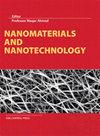Comparative analysis of crystallization behavior induced by different mineral fillers in polypropylene nanocomposites
IF 3.1
3区 材料科学
Q2 MATERIALS SCIENCE, MULTIDISCIPLINARY
引用次数: 5
Abstract
A comparative analysis of crystallization behavior induced by several mineral fillers in polypropylene nanocomposites was performed. Morphological changes and thermal properties of nanocomposites were evaluated, considering the influence of shape, crystalline morphology, and concentration of mineral particles. For this study, hydrated magnesium silicates with different particle morphologies, such as platelets (talc) and fibers (sepiolite), were used for nanocomposites. In addition, to analyze the effect of mineral crystallinity on nanocomposites, talc and sepiolite from different origin and genesis were selected. Nanocomposites were compounded and injection molded, using different filler concentration (0, 1, and 3% w/w) for each mineral particle. To evaluate the particle influence on nanocomposite crystallinity, X-ray diffraction was used to determine crystalline phases and crystal orientation, meanwhile differential scanning calorimetry was performed to obtain thermal properties. Main results revealed that talc has a higher nucleating effect on polypropylene matrix than sepiolite fibers, regardless of their origin and genesis. Meanwhile, a transcrystalline layer that surrounds the fiber surface is observed for nanocomposite containing sepiolite. Moreover, Argentinean talc induces different crystalline phases in nanocomposite with respect to Australian one, which partly influences on mechanical properties.聚丙烯纳米复合材料中不同矿物填料诱导结晶行为的比较分析
对几种矿物填料在聚丙烯纳米复合材料中引发的结晶行为进行了比较分析。考虑到矿物颗粒的形状、结晶形态和浓度的影响,评估了纳米复合材料的形态变化和热性能。在这项研究中,具有不同颗粒形态的水合硅酸镁,如片状物(滑石)和纤维(海泡石),被用于纳米复合材料。此外,为了分析矿物结晶度对纳米复合材料的影响,选择了不同来源和成因的滑石和海泡石。对每个矿物颗粒使用不同的填料浓度(0、1和3%w/w),复合并注射成型纳米复合材料。为了评估颗粒对纳米复合材料结晶度的影响,使用X射线衍射来确定晶相和晶体取向,同时进行差示扫描量热法来获得热性能。主要结果表明,滑石对聚丙烯基体的成核作用高于海泡石纤维,无论其来源和成因如何。同时,对于含有海泡石的纳米复合材料,观察到围绕纤维表面的穿晶层。此外,与澳大利亚滑石相比,阿根廷滑石在纳米复合材料中诱导了不同的结晶相,这在一定程度上影响了力学性能。
本文章由计算机程序翻译,如有差异,请以英文原文为准。
求助全文
约1分钟内获得全文
求助全文
来源期刊

Nanomaterials and Nanotechnology
NANOSCIENCE & NANOTECHNOLOGY-MATERIALS SCIENCE, MULTIDISCIPLINARY
CiteScore
7.20
自引率
21.60%
发文量
13
审稿时长
15 weeks
期刊介绍:
Nanomaterials and Nanotechnology is a JCR ranked, peer-reviewed open access journal addressed to a cross-disciplinary readership including scientists, researchers and professionals in both academia and industry with an interest in nanoscience and nanotechnology. The scope comprises (but is not limited to) the fundamental aspects and applications of nanoscience and nanotechnology
 求助内容:
求助内容: 应助结果提醒方式:
应助结果提醒方式:


